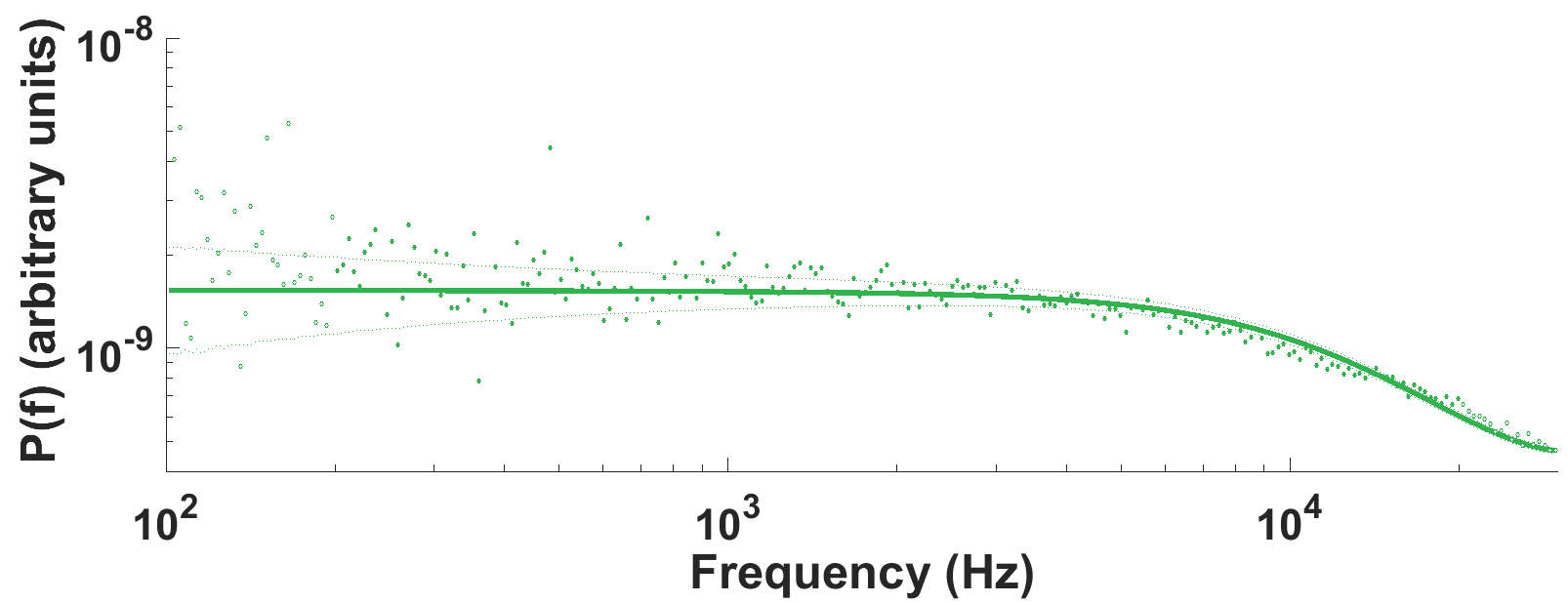Viscoelasticity | Active-passive calibration
In our cooperations with other labs from the Cells-in-Motion Cluster of Excellence we are interested in working on biological questions ranging from the single cell level to the whole organism. This puts specific requirements on the experimental setup, methods and evaluation procedures. Cells are alive and active, changing their shape and their environment constantly. This influences their biomechanical parameters, such as the viscoelasticity. Knowledge about these parameters is crucial for force measurements, since an actively deforming cell is causing forces in addition to the force by the optical tweezers. To separate these state-of-the-art methods and technologies are applied.
Through high-speed position detection we are able to calibrate force measurements in viscous media. Evaluation is done in the frequency space giving us access to low frequency noise as well as high frequency thermal motion of our trapped objects (see figure below). The first one is not desired, the latter one is. Applying this enables us to characterize standard microparticles as well as advanced core-shell particles.
In viscoelastic media, such as cells, we further employ a so-called active-passive calibration and the Fluctuation-dissipation theorem for spatially and temporally resolved viscoelasticity measurements. Changes in the viscoelasticity reveal changes of the organisms, such as cell division. We are thus able to investigate forces inside as well as outside of cells in vitro and in vivo.


